I'll break down what AI in digital marketing is, how to use it, examples, pros and cons, and marketing strategies that benefit from AI.
Table of Contents
- What is AI in digital marketing?
- How do digital marketers use AI?
- What AI tools are marketers using?
- AI Marketing Pros and Cons
- Examples of AI in Digital Marketing
- How to Use AI in Digital Marketing
What is AI in digital marketing?
AI in digital marketing is the use of artificial intelligence to plan, execute, or optimize a company’s marketing efforts. AI marketing aims to improve the company’s marketing performance, efficiency, and cost savings.
AI uses machine learning and large-language models (LLMs) to analyze big data and turn it into actionable insights, automated actions, and content.
AI can even interact with customers who perform a specific behavior on your website, like clicking a button or liking a social media post.
What does this mean for you? With AI, you can analyze customer behavior, predict outcomes, automate marketing tasks, and create and personalize marketing content.
New AI tools are coming on the market every day. They promise to help marketers do their jobs faster, smarter, and more easily. Since these tools are still emerging, not every one is a home run, and the number of tools to research is overwhelming.
We've surveyed over 1,000 marketers to see how they use AI in their jobs and where it impacts them.
Pro tip: If you're a HubSpot user, check out our new AI tools. We have a new content assistant, AI Blog Topic Generator, and ChatSpot tools to streamline your day-to-day. Our features use AI, including SEO, call recordings, social media, data management, and more.
Get started with HubSpot Content Assistant.
How do digital marketers use AI?
In our latest survey, 66% of marketing professionals globally said they use AI tools in some form in their jobs, with 74% of US marketers adopting AI in their roles. The purpose and level of integration can vary widely, but AI adoption continues to grow as in-built AI features make these tools more accessible.
So, how are they using it? Our 2025 research found that text-based content creation leads the way, with 55% of AI-using marketers relying on it for blogs, emails, and social posts. Research follows closely behind at 47%, including market research and article summarization, while 41% use AI for automating direct brand messaging and conversational marketing.
Let's take a closer look at the potential uses of AI in digital marketing.
Ways to Use AI in Digital Marketing
1. Data Analytics
Struggling to make sense of large data sets? Most digital marketing tools give you analytics, but marketers often have to export and piece together data from different platforms like puzzle pieces to get the big picture.
AI can collect and sift through large amounts of data from multiple marketing platforms and summarize the findings. 36% of marketers who use AI rely on it for data analysis and reporting, making it a significant use case for improving marketing insights.
This will help you save time when strategizing and developing marketing assets for your campaigns.
Pro tip: HubSpot Sales Hub has conversational intelligence capabilities to help you understand how your team performs on customer calls through data-driven insights.
Learn how to use account-based marketing recommendations powered by AI.
2. Content Creation
Digital marketers can instruct AI to write marketing content, including captions, social media posts, email copy, and even blog copy. Beyond writing, marketers can use AI for multimedia like images, audio, and even video.
Content creation remains AI's killer use case, with 55% of AI-using marketers relying on it for text-based content creation. Additionally, 38% use AI for multimedia, including videos, images, and audio.
It‘s important to note that most AI-generated content isn’t ready for publishing immediately. Most marketers today use generative AI as a starting point — whether that's ideation, an outline, or a few paragraphs to ignite creativity.
Only 4% of marketers using AI say that they use it to write entire pieces of content, and just 7% publish AI-generated content with no edits at all. Most make significant edits to AI-generated text (56%) or minor tweaks (38%) before publishing.
Pro tip: HubSpot's AI-powered Content Assistant helps you generate blog ideas, create outlines, and write blogs or marketing emails.
3. Reducing Admin Work
Like any professional role, digital marketers spend a significant amount of time sitting in meetings and doing administrative tasks.
HubSpot's 2025 State of Artificial Intelligence report found that 78% of marketers agree that AI helps reduce time spent on manual tasks like data entry and scheduling. In fact, 26% of AI-using marketers leverage AI to take notes and summarize meetings.
AI tools can tackle manual tasks like scheduling meetings, summarizing articles and research, and taking notes. These functions aren‘t sexy, but they free up a marketer’s time on more important, creative parts of their jobs.
Or take Superhuman, the email known for its speed. Its AI features save hours in your inbox by summarizing whole email threads, preparing draft replies in your voice, and an AI search 2-3x faster than Gmail‘s or Outlook’s.
4. Content Personalization
AI analyzes users online and gives them a more personal experience with marketing assets, including web pages, social media posts, and emails. Our research shows that 60% of marketers believe AI helps them personalize the customer experience.
This means AI can change the customer‘s experience depending on their online behavior or whether or not they’ve filled out a form for your company.
For example, dynamic content changes depending on the user's name, occupation, online behavior, etc.
6Sense is one example of a tool that leverages AI to sift through intent data. By understanding who in your audience is looking to purchase, you can personalize the marketing experience.
5. Media Buying
Another way to use AI in marketing is through media buying. Gone are the days when junior media buyers hand-select websites or billboards to advertise on.
Instead, adtech platforms use AI to choose the most effective ad and media placements to reach a target audience and maximize ROI.
If you use Google Ads, you've already encountered the AI feature that assists with the auction process.
Other standalone AI tools like Pattern89 provide recommendations on your ad spend and enable you to target the right audience to increase performance.
Pro tip: You can also leverage AI to help you write engaging ad copy in a fraction of the time.
Campaign Assistant is a free AI-powered app that can help you generate ad copy for Google, Facebook, and LinkedIn with ease — all with just a few simple prompts.
6. Chatbots
One use of AI in marketing that we've seen for years is chatbots. Chatbots, created with natural language processing (NLP), can answer common questions, nurture leads, schedule demo calls, and more.
A chatbot can personalize the customer journey during the stage when they're consuming marketing content. This tool can also answer customer questions. Our data shows that 31% of marketers use AI for brand chatbots on social media or their website.
Let's look at Drift, for example. The company has trained its chatbot to answer questions, even outside of a pre-programmed path. This way, if a person has a question that isn't loaded into the system, the user will still get an answer.
Pro tip: Looking to better understand how AI-powered chatbots can answer customer questions? HubSpot Academy can help. This course describes the difference between rule-based and AI-powered chatbots.
7. Automated Email Marketing Campaigns
Automated email marketing has also been around for years. However, AI tools can help produce more engaging email content and learn about your email list behaviors.
The goal is to have your marketers spend less time researching and brainstorming so they can focus on sending successful campaigns. Email marketing ranks as the top content type where AI is used, with 51% of marketers applying AI to email marketing and newsletter platforms.
As AI expands and improves, automated email marketing software becomes even more important to include in your marketing stack.
HubSpot Content Assistant can help you create marketing emails. Write a prompt about what you'd like to promote — from a discount to a webinar to a blog post — and AI can generate a message with the right tone.
8. Predicting Customer Behavior
Another great use of AI in digital marketing is to forecast customer behavior and sales.
AI can predict the outcome of marketing campaigns by using historical data, such as consumer engagement metrics, purchases, time-on-page, email opens, and more.
AI helps marketers understand the predicted outcome of their campaigns and marketing assets and forecast outcomes. These insights help marketers develop better, more dynamic campaigns that produce sales and boost ROI.
9. Improving Customer Experience
Digital marketing is all about the customer experience, and AI can help marketers deliver the best experience for their visitors to convert them into leads.
AI can help increase customer retention and loyalty, delight customers with personalized content, and improve assets. Our research found that 66% of marketers agree that AI helps them spend more time on creative aspects of their job, ultimately leading to better customer experiences.
What AI tools are marketers using?
The AI marketing landscape is vast and growing rapidly. For a comprehensive guide to the top AI marketing tools available today, check out our detailed AI marketing tools guide.
Here's a sample of popular AI tools marketers are currently using:
General purpose chatbots dominate the landscape, with ChatGPT used by 88% of marketers who use chatbots, followed by Google Gemini at 52% usage and Microsoft Copilot at 44% usage.
For content creation, image generators like DALL-E and Midjourney are used by 40% of AI-using marketers, while video editing AI tools with automatic features see 36% usage, and voice and narration generators like Speechify and Murf are used by 33% of marketers.
Specialized marketing tools are also gaining traction, including HubSpot Content Assistant for blog and email creation, Jasper for copywriting, and Copy.ai for content generation.
The data shows that 71% of marketers use two or more chatbots, with the average marketer using 2.41 different chatbots. This suggests that no single AI tool meets every marketing need, and successful marketers are building diverse AI toolkits.
AI Marketing Pros and Cons
While AI has a lot of great benefits, it‘s still an emerging technology and has some drawbacks. Let’s examine some of the advantages and disadvantages of AI in digital marketing.
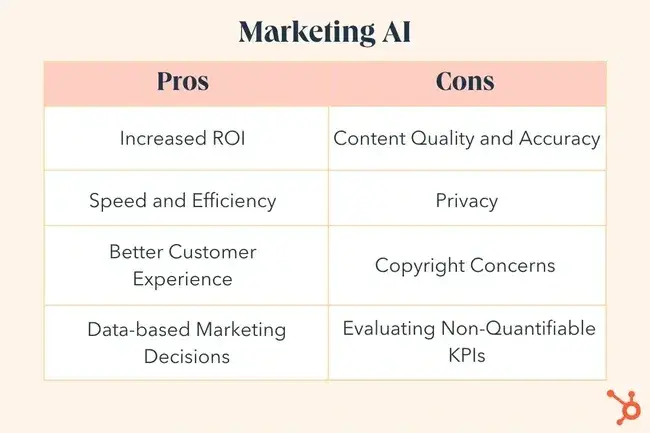
Pros of AI in Digital Marketing
1. Increased ROI
Companies are seeing strong returns on their AI investments. According to our research, 75% of companies report positive ROI from AI and automation investments, with 34% saying the return has been “very positive.” Additionally, 67% of companies plan to increase their AI spending in 2025.
Rather than running an ineffective ad for an entire campaign, you can harness data analytics and insights to produce better marketing assets in real-time.
This saves your marketing team time and money, allowing them to work more efficiently and increase profits. Cutting staff time and production costs also boosts your ROI.
2. Speed and Efficiency
Efficiency gains are the primary measure of AI success, with 64% of marketers tracking increased productivity and 55% measuring time savings as key outcomes. Our research shows that 78% of marketers agree that AI helps reduce time spent on manual tasks.
This frees up your time and capacity to do more and invest your time where it matters most, but it also helps your brand.
All marketers know that being first in a market is a major advantage.
Whether you're spinning out social media campaigns based on pop culture moments or launching digital campaigns, the ability to pivot and launch campaigns in days or even hours is pure gold.
3. Better Customer Experience
Another advantage to using AI in marketing is that it can improve your relationship with your customers. Our data shows that 74% of marketers say AI allows them to focus more on the most important parts of their role, while 66% agree that AI helps them spend more time on creative aspects of their job.
The more personalized your recommendations are and the deeper your relationships are, the more likely they'll become repeat buyers.
AI can also identify customers at risk of churn and put them in an automated marketing campaign to get them to re-engage with your company.
4. Data-Based Marketing Decisions
AI can make scaling your business easier, using data to analyze, predict, and create marketing assets that sell. Our research found that 66% of marketers believe AI pulls insights from data they otherwise wouldn't be able to find. See how your team can use artificial intelligence and automation in this course from HubSpot Academy.
Cons of AI in Digital Marketing
1. Content Quality and Accuracy
While generative AI has come a long way, its content isn't flawless. Factual errors are a particular issue: 43% of marketers say that generative AI sometimes produces inaccurate information, making it the top challenge they face.
Additionally, 34% of marketers struggle with AI producing biased content, and 30% say AI's outputs are often irrelevant to their needs or too surface-level and vague.
If you're going to use AI to generate content without having a human edit it, you may see a drop in the quality. The success of AI is reliant on high-quality data that is accurate and timely.
Without a human editor, AI can produce content with factual inaccuracies, bias, or a divergent tone from your brand. Using AI requires human oversight so these types of mistakes don't happen.
2. Privacy
As marketing assets have become more personalized through the years, customers are beginning to value privacy more and more.
With AI, some of these techniques require using a customer's cookies and previous internet behavior to predict future purchases. Our research shows that 41% of marketers cite data privacy concerns as the primary barrier to AI adoption.
If your marketing team downloads and uses AI software, you'll need to be sure you comply with privacy laws, such as GDPR.
3. Copyright Concerns
As a new technology, the legal framework for AI is still being built. Generative AI tools are trained on public content from thousands of companies, so it‘s possible they could generate content that’s a little too close to your competitor's.
Copyright laws are written around human authorship, so it's unclear if you actually own AI-generated content in the same way. Additionally, 19% of marketers worry that generative AI sometimes produces plagiarized information.
4. Integration and Training Challenges
Our research reveals significant barriers to AI adoption beyond content quality. Training and time investment concerns affect 39% of marketers, while 34% struggle with integration challenges with existing or legacy systems.
Additionally, 34% of marketers say too many tools do similar things but don't connect to one another, creating a fragmented landscape that can be more frustrating than helpful.
It might be hard to get buy-in to invest in AI at your company because there are non-quantifiable KPIs at play.
Certain metrics will be easy to track, but others — like improving the customer experience, increasing brand awareness, or improving reputation — will be much harder. That‘s why it’s important to have the right measurement tools, like HubSpot's marketing analytics platform, in place.
The platform lets you track KPIs across all your marketing channels under unified dashboards — from website traffic and page views to the number of leads generated through ad campaigns, and more.
Examples of AI in Digital Marketing
At this point, you might be wondering, “Okay, but how does this look in practice?” Let's review some real-life examples of how big media companies have used AI in their digital marketing.
1. Netflix
If you're in marketing, you know you have to deliver the right message to the right person at the right time. Netflix uses AI to do this. How?
On a Netflix Tech Blog, the company explains how it uses previous viewing history to determine the artwork for recommended movies or TV shows.
For example, if you‘ve watched a lot of one actor’s movies, they might recommend another movie they‘re in. But if the artwork doesn’t show off the actor, you may click away.
So, when the movie is recommended to this specific viewer, the artwork will showcase that actor.
Or maybe a viewer tends to watch more comedies than romances. When Netflix recommends a movie, they might change the artwork to show off comedic scenes versus romantic moments from the film.
Let's take a look at how Netflix would recommend the movie Good Will Hunting to someone who watches romance movies versus the artwork they'd use to recommend the movie to someone who watches comedies.

So, why does Netflix do this? The goal is to increase conversion rates and improve the customer experience on their platform.
2. Spotify
Spotify uses a similar approach to Netflix. The company will use AI to understand a user's music interests, podcast favorites, purchase history, location, brand interactions, and more.
Then, customized playlists and recommendations are curated for each user.

This type of content personalization has helped major media companies like Spotify become top streaming platforms. But the personalization doesn't end there.
Spotify will also send automated email marketing messages with personalized recommendations.
The goal? Create automated marketing messages and assets that will convert a user because the message is specific to that customer.
3. Amazon
Two major use cases for AI in marketing are forecasting sales and analyzing data. Amazon uses AI to do just that.
When you go on Amazon, there is a recommended products section that uses predictive analytics to determine if a customer is likely to make a purchase.

This helps the marketing teams at Amazon know what products to place in front of which customers. Plus, they can predict how well a product will sell based on their recommended product campaigns.
This type of AI helps increase conversions, improve customer satisfaction, and measure the overall success and ROI of various marketing campaigns.
4. Dreamhost
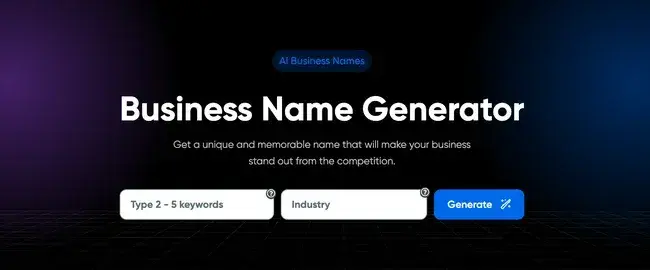
DreamHost's Business Name Generator uses AI to offer custom-tailored business name ideas. Just input keywords related to your business, and it suggests unique names in real-time and also checks domain availability to help you kickstart your online presence.
5. StoryChief's AI Marketing Agent: William
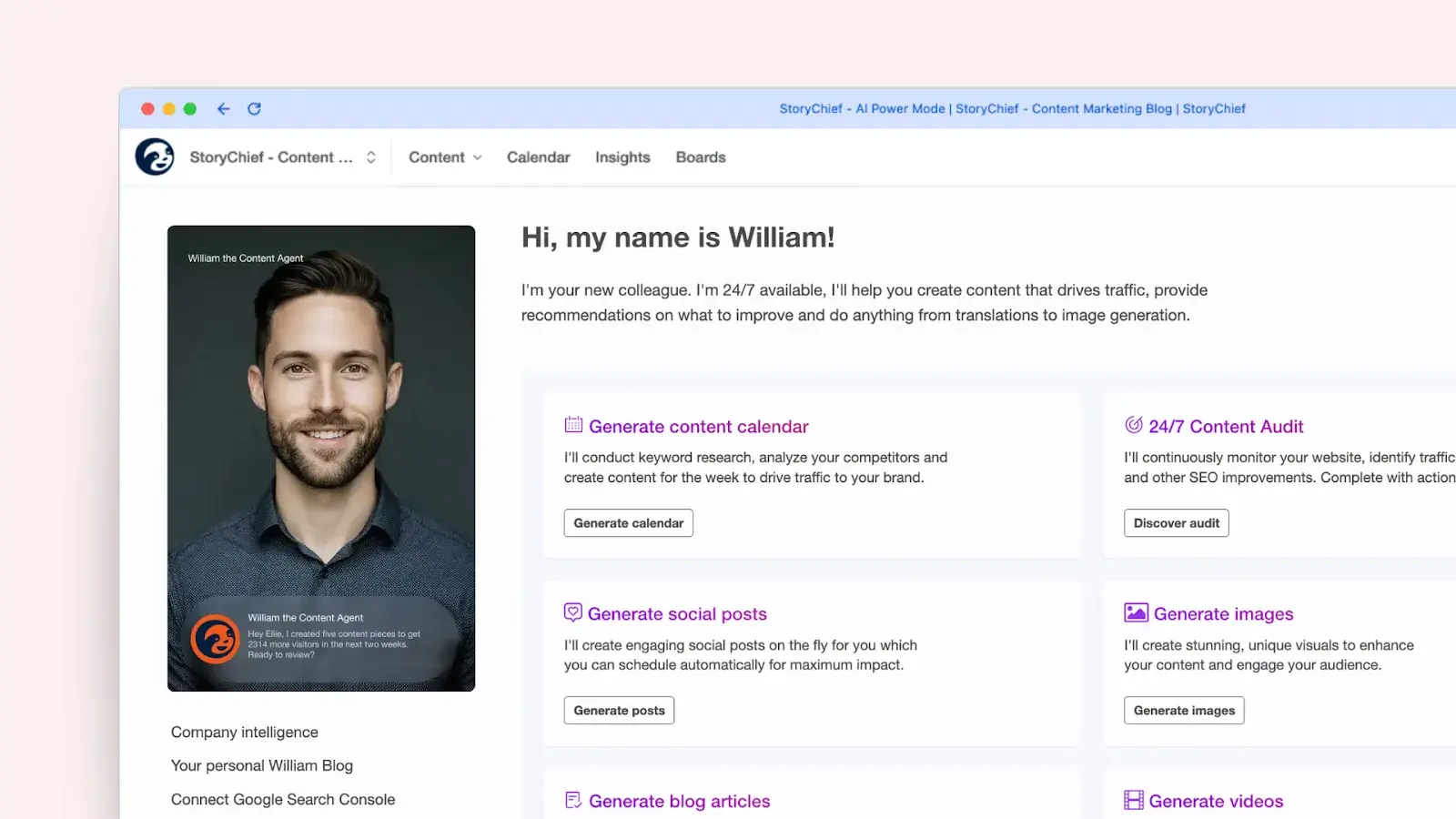
StoryChief's AI Marketing Agent, William, generates a custom content strategy tailored to your brand by simply entering your website URL. He suggests content pillars, defines your brand voice, identifies your target audience, and even pre-fills your content calendar.
But it doesn't stop there. William continuously monitors content performance, provides traffic audits, and offers fresh content ideas to keep you ahead of trends. Plus, you stay in control — curating, approving, and publishing content as you see fit.
How to Use AI in Digital Marketing
If you haven't started deploying AI in your digital marketing strategies, this is your year.
For starters, make sure you're staying informed about the latest developments in AI so you can be sure you're using it effectively.
However, take note: Successful AI implementation requires more than just adopting new tools — it demands a strategic, systematic approach that considers both opportunities and risks.
The best way to make any large organizational change is through a strategic, systematic, and empathetic approach that addresses both the technical and human elements of transformation.

1. Define your goals and success metrics.
Before starting out, determine what goal or objective you want to reach. Do you want to make your campaigns more effective? Do you want to save your team time or money? Are you looking to improve personalization or enhance data insights?
Our research shows that marketers measure AI effectiveness primarily through increased productivity (64%), time savings (55%), and better overall role performance (43%). However, you should also consider how AI will impact customer-facing metrics like personalization improvements (39%) and enhanced data insights (39%).
Don‘t skip this step — you can’t determine success without defining your goals and quantifiable KPIs. Consider both quantitative metrics like ROI, time saved, and productivity gains, as well as qualitative outcomes such as employee satisfaction, creative output quality, and customer experience improvements.
Strategic considerations include aligning AI goals with broader business objectives, setting realistic expectations for AI capabilities and limitations, establishing baseline measurements before implementation, and creating feedback loops for continuous improvement.
Potential challenges include difficulty measuring non-quantifiable benefits like creativity or innovation, overestimating AI's immediate impact on complex marketing challenges, and resistance from team members who fear job displacement.
2. Audit your infrastructure and data readiness.
To start, put together a small team to analyze your current tools and infrastructure and find opportunities for adoption. This audit should examine both your technical capabilities and data quality, as AI success depends heavily on having clean, accessible, and relevant data.
Write a report with all possible areas of implementation, potential outcomes, and what resources you would need to make it happen. Our data shows that 34% of marketers struggle with integration challenges with existing or legacy systems, so this step is crucial.
Assess the quality, quantity, and accessibility of your data to see how suitable it is for AI applications. Don't forget to identify potential challenges or negative outcomes along with the positive.
You can't throw out your marketing playbook and replace it with AI strategies overnight, so identify your top two to three areas where you want to test initially.
Strategic considerations:
- Evaluate data privacy and security standards (75% of marketers heavily consider this factor)
- Assess technical infrastructure requirements for AI tool integration
- Identify data silos that might limit AI effectiveness
- Consider scalability requirements for future expansion
Potential risks:
- Data privacy violations if proper security measures aren't in place
- Integration failures with legacy systems
- Data quality issues leading to poor AI outputs
- Overcomplicating existing successful workflows
These don't all have to be huge initiatives like overhauling your email marketing — small things can add up. For example, using AI tools for note-taking from meetings and transcribing interview recordings can provide immediate value while building confidence in AI capabilities.
3. Audit staff capabilities and address change management.
Another critical area you should assess is whether your staff has the training and knowledge to implement these programs effectively. Our research reveals that training and time investment concerns affect 39% of marketers, making this a significant barrier to overcome.
You'll likely need to invest in training for your current staff, hire a consultant, or create a new position to drive forward your AI initiatives. Consider that employees are largely willing to adopt AI — 51% are eager to use AI tools—but 17% express hesitation or resistance.
A strategic approach to change management involves positioning AI as an opportunity for your team to reskill and become better marketers, providing dedicated learning resources (56% of marketers learn through educational videos, 48% through company-provided training), creating internal champions who can advocate for AI adoption, and addressing job security concerns proactively and transparently.
For training and development, consider that 37% of companies provide course stipends for AI-related training, 42% offer subscriptions to AI tools or platforms, 39% have internal AI training programs, and 34% provide dedicated weekly hours for AI experimentation.
4. Select the right AI marketing tools strategically.
Once you‘ve identified your goals and top areas for implementation, it’s time to build your toolbox strategically. Your current tools may already offer AI features — 89% of AI users report increased usage due to AI being added to existing tools like Microsoft Copilot or Google Docs AI suggestions.
Our research shows that marketers rely heavily on peer reviews (48%) and free trials (47%) when evaluating new AI tools. This suggests a practical, test-driven approach to tool selection.
Tool selection criteria should focus on data privacy and security standards (prioritized by 75% of marketers), legal terms and ethical policies (considered by 73% and 67% respectively), integration capabilities with existing systems, and cost-effectiveness with clear ROI potential.
Popular tool categories to consider include general-purpose chatbots like ChatGPT (88% usage), Google Gemini (52%), and Copilot (44%), content creation tools such as image generators (40% usage), video editing AI (36%), and voice generators (33%), and specialized marketing tools for email, social media, and analytics.
Strategic considerations include the build vs. buy decision (66% of companies develop internal AI tools for better control and customization), taking a multi-tool approach (71% of marketers use multiple chatbots rather than relying on one), using a free trial strategy to test before committing to paid plans, and conducting thorough vendor evaluation including case studies, peer recommendations, and direct sales conversations.
Potential pitfalls include tool fragmentation (34% say too many tools do similar things but don't integrate well), over-investing in tools without proper training or change management, choosing tools based on hype rather than actual business needs, and insufficient security vetting, which can lead to data privacy issues.
First, decide whether you'll use an out-of-the-box AI solution or a custom one. Examples of out-of-the-box AI solutions are Jasper, ChatGPT, or Google Bard.
A custom solution, which you can create with APIs for an open-source AI like Llama 2, can be a powerful solution for long-term success. You can connect and train AI on your proprietary data or train a GPT on your own voice and style.
This approach takes additional expertise, so you'd need to work closely with a consultant or your IT department.
5. Test, analyze, and iterate strategically.
At last, it's time to test the waters systematically. Take your top two to three areas of implementation and launch controlled pilot programs. Set a timeframe and some target KPIs to watch so you can compare results against your baseline measurements.
Your testing framework should start with low-risk, high-impact use cases, run parallel tests comparing AI-generated vs. human-generated content, document processes, challenges, and outcomes meticulously, and set specific timeframes (e.g., 30-90 day pilots) with clear success criteria.
Key metrics to monitor include productivity gains (64% of marketers track increased productivity), time savings (55% measure time saved across teams), quality metrics such as accuracy, brand alignment, and customer engagement, plus ROI indicators like cost savings, campaign performance, and lead generation.
For iteration and scaling, use learnings from pilot programs to refine your approach, scale successful use cases while discontinuing ineffective ones, continuously monitor for the challenges identified in our research (bias, accuracy, relevance), and build feedback loops with both internal teams and customers.
Risk mitigation strategies should include maintaining human oversight for all AI-generated content (only 7% publish without edits), implementing fact-checking processes to address accuracy concerns (43% cite this as a challenge), monitoring for bias and brand alignment issues, and having rollback plans for unsuccessful implementations.
For instance, if you want to test AI-written and AI-placed social media ads, run a trial period of a month. Monitor and edit the content throughout the month and document the process.
Once you're done, compare the performance of AI-generated, human-generated, and AI-assisted content to see how it did and create a plan moving forward.
6. Build a sustainable culture of AI innovation.
As mentioned, getting your team on board is key with any new technology change, but building a lasting culture of AI innovation requires ongoing commitment and strategic thinking.
Culture development strategies include asking your team for regular feedback and bringing them along in the process, assuring them that AI is intended to make them better, not replace them, celebrating wins and learning from failures openly, and creating communities of practice around AI use cases.
Organizational support structures should consider that 66% of companies plan to increase AI spending in 2025, showing long-term commitment. You might also consider dedicated AI roles or responsibilities within marketing teams, provide ongoing learning opportunities beyond initial training, establish governance frameworks for ethical AI use, and plan for regulatory changes in AI governance and data privacy.
Long-term strategic considerations include staying current with AI developments and new use cases, building internal expertise rather than relying solely on external vendors, developing AI-specific policies and guidelines, and planning for increased AI integration as the technology matures.
Addressing ongoing challenges involves combating AI fatigue by focusing on clear value delivery, managing the complexity of multiple AI tools and integrations, balancing automation with maintaining human creativity and judgment, and preparing for regulatory changes in AI governance and data privacy.
Remember that building an AI-enabled marketing organization is a marathon, not a sprint. The 75% of companies reporting positive ROI from AI investments got there through careful planning, strategic implementation, and ongoing optimization — not overnight transformations.
Harnessing the Power of AI
Marketing teams can scale their operations with AI, and it doesn't have to break the bank. Our latest research shows that 67% of companies plan to increase their AI investment in 2025, with 75% already reporting positive ROI from their AI and automation tools.
However, it‘s important to keep in mind AI’s limitations, even as the technology continues to improve over time in the changing marketing landscape. The key challenges marketers face—accuracy issues, bias concerns, and relevance problems — remind us that human oversight remains essential.
While you can use it to aid several marketing campaigns (and should), AI works best as an intelligent assistant rather than a replacement. The most successful marketers use AI to enhance their creativity, productivity, and strategic thinking while maintaining the human touch that makes great marketing truly resonate with customers.
The future of marketing lies not in choosing between human creativity and artificial intelligence, but in thoughtfully combining both to create more effective, efficient, and engaging marketing experiences.
Editor's note: This article was originally published in March 2024 and has since been updated for comprehensiveness.
Artificial Intelligence


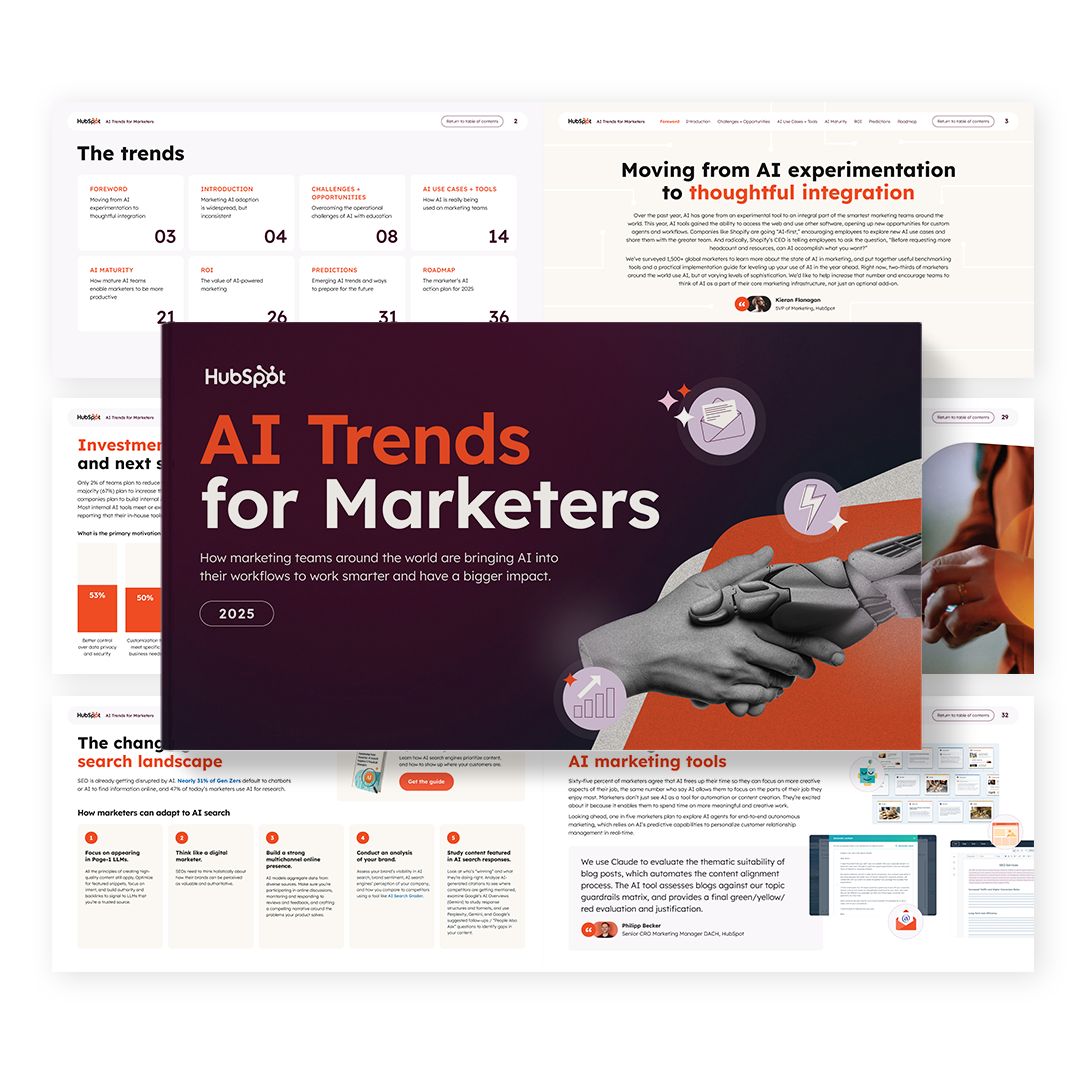


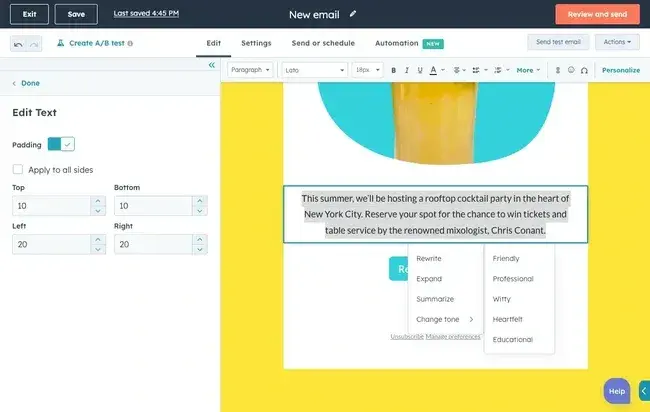

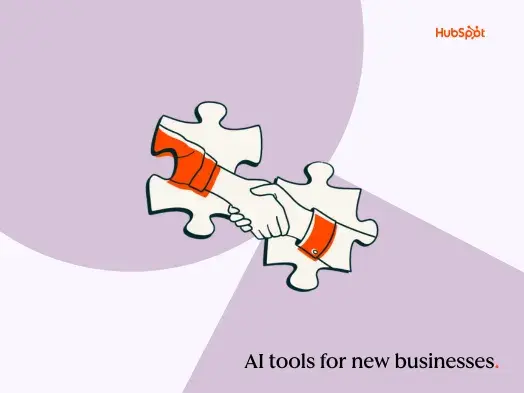
![AI email subject lines that drive 3x more revenue and actually convert [+ exclusive insights]](https://53.fs1.hubspotusercontent-na1.net/hubfs/53/ai-email-optimization-1-20251014-4500151-1.webp)
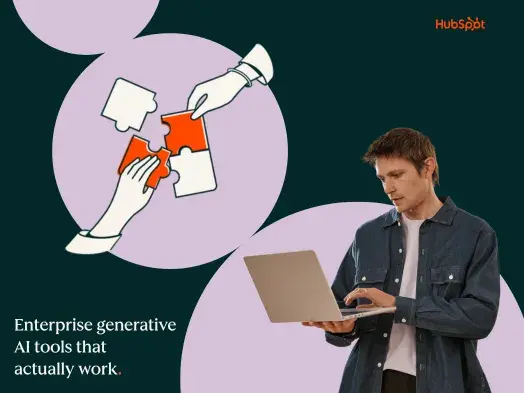
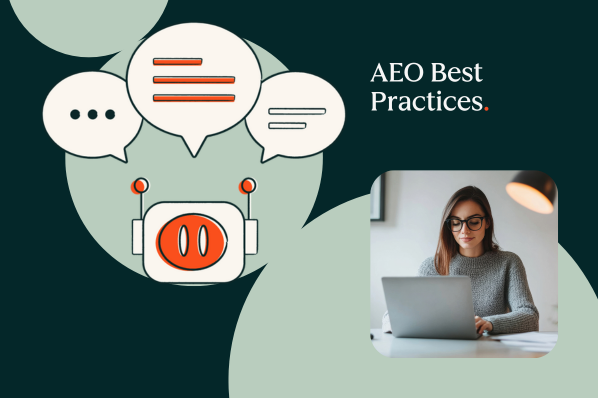




-1-20250905-2237709%202.webp)